Pelješac Peninsula and Korčula
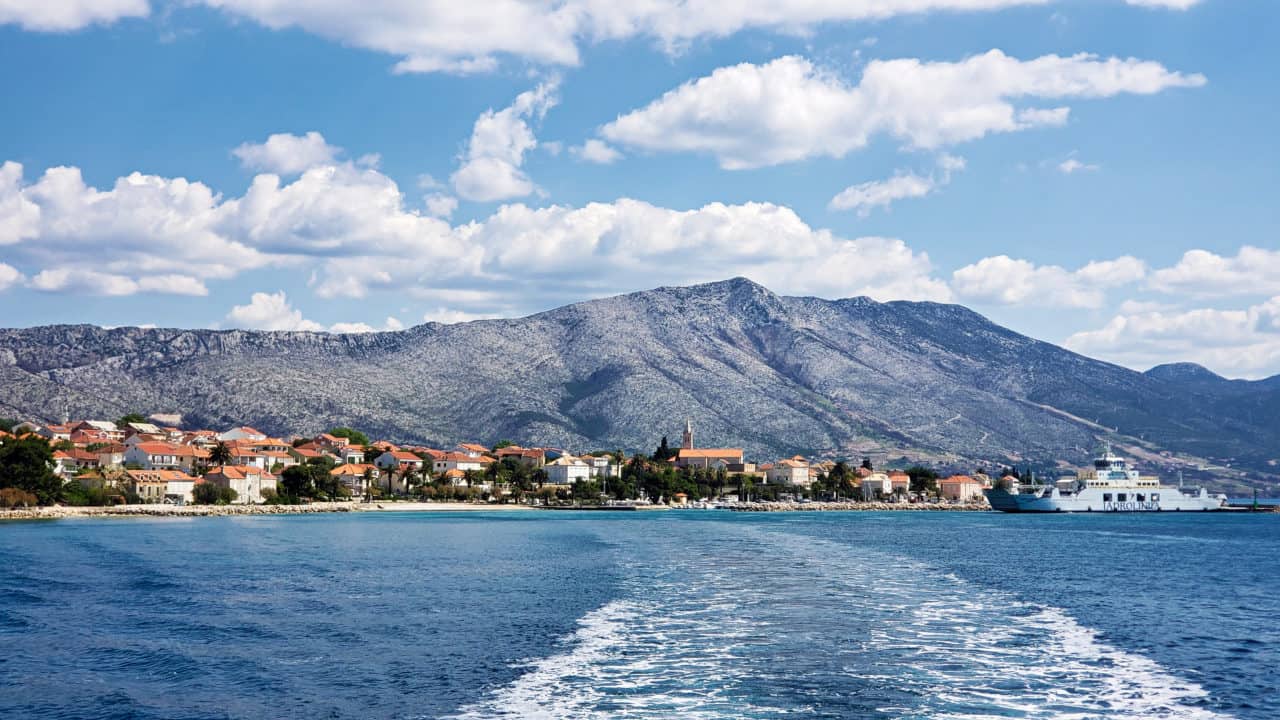
Mike and I have just spent the last 9 days on the Pelješac Peninsula next to the tourist island of Korčula. Although we are on a peninsula, it feels more like an island. To get to our campsite we took a one-hour ferry from the mainland. Croatia has some very unusual borders in this part of the country. To drive south through Croatia, you have to cross through 20 km of Bosnia and Herzegovina. Bosnia owns a thin strip of land out to the Adriatic, cutting off the southern most portion of Croatia from the rest of the country. I had assumed that this happened because it was decided that Bosnia should have access to a seaport. Not true. While the Venetians controlled most of Dalmatia or coastal Croatia, the Dubrovnik region was first an independent state and then a vassal of the Ottoman Empire (Turkey). In the 1600s the Great Turkish War broke out. Dubrovnik found itself in the middle of a war it had nothing to do with, and feared that the Ottoman’s enemies, who controlled its neighbours to the north, might try to attack their city. In order to shield itself from attack, Dubrovnik literally distanced itself from the rest of Dalmatia by seceding a small piece of land by the Adriatic Sea directly to the Ottoman Empire. Now to get to Dubrovnik, Ottoman’s enemies would have to cross over this small territory belonging to the powerful Ottoman Empire. This arrangement actually worked. When Yugoslavia broke up Bosnia and Herzegovina retained its only access to the Adriatic Sea through this corridor.
This might be very interesting, but it certainly causes headaches for tourists. Possibly Croatia’s main tourist attraction, Dubrovnik, can only be reached by driving across two international borders, going through two custom checks and associated security with lots of unwanted delays. To make matters worse, a lot of car insurance policies, including ours, won’t insure vehicles in Bosnia. This means that you have to buy a separate insurance policy to drive through that 20 km strip of territory that extends to the coast. The minimum policy is typically for at least 15 days. Croatia is just starting to build a bridge from the peninsula where we have been staying to the mainland, simply to bypass the Bosnian corridor and all the associated headaches. The current ferry takes about an hour and cost us almost $100 for the RV and car. Bosnia and Herzegovina has applied to become members of the EU but it is currently not a member.
Once we head back north, we will likely buy the insurance and cross the borders. We might even spend some time in Bosnia. We will need to check out the insurance costs and camping facilities. We still don’t know if we are going into Montenegro or not and that decision needs to be made before we think about Bosnia.
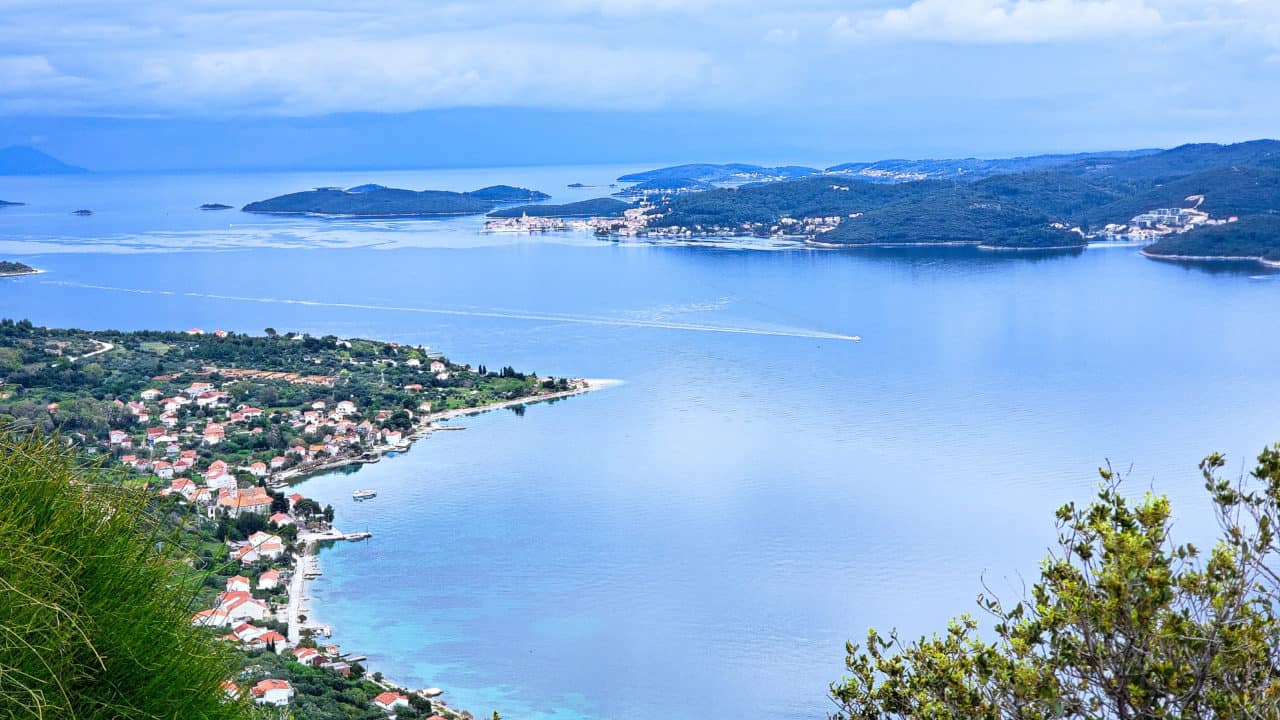
Five days of heavy rain have caused problems with the water quality in the southern half of Croatia. Apparently, this area has very old fresh water wells. These are slowly being upgraded, but in the meantime, heavy rainfalls contaminate the water supply. Contaminate might not be the right word. The water doesn’t taste very good and isn’t as clear as normal. Many of the restaurants won’t serve tap water at the moment, although they did before the rain. The rainy days of a week ago have now been replaced by sunshine and cool, strong winds from the NE. Mike wanted to take our boat into the water and use it to visit some fairly close neighbouring islands. I did not want to be out in cool weather, sitting below the waterline and getting splashed with the wind and waves. We have done this before, and it isn’t much fun, so the boat remains untouched.
We might not have used our boat, but we have been using our bikes. Again, thanks to the steep hills, we can’t go very far on the bikes, but just riding them along the Adriatic in brilliant sunshine is great. We did manage to do about 25 km on the bike the other day and that covered almost all the roads that we think we can manage near our campsite, even with our electric bikes. We were biking along what we thought was a waterfront bike and pedestrian path when we met two oncoming vehicles. There wasn’t even room for a car and a bicycle to pass on much of the path never mind finding out that the path was a two-way road for cars as well as bikes and people.

One day we drove up to see a monastery perched high in the hills. The view was gorgeous, but the road was very narrow and ran right along the edge of the cliff. The thought of meeting any car coming from the opposite direction was a bit scary. Our camping neighbours actually made it up the hill/mountain on their new electric bikes. Mike and I wouldn’t even try it on our bikes, I would be too scared of burning out my motor again. Being vertically challenged, I also have a problem going up very steep hills. On level ground my toes just touch the pavement when we stop, and even then, I am somewhat unsteady. This has caused me to fall, slowly, a few times when I stopped and the ground under me was uneven and I couldn’t reach it from my bicycle seat. On a steep uphill slope, if the bike decides it doesn’t want to continue, I am scared to death about trying to stop the bike and get my feet firmly on the ground. I managed this once and Mike had to come back for me because I couldn’t balance on the hill on one leg, pull my other leg over the bicycle bar and still hold the bike steady. The joys of being short and not very athletic!
We have been staying in a lovely campground right on the Adriatic. Across from us is both the town of Korčula situated on the island with the same name. We took our car on a ferry to visit the town and the island for a day. While we were on this 15-minute ferry ride we were told that Korčula was known as a mini-Dubrovnik and one family said they actually preferred it to Dubrovnik. We changed our plans immediately and decided to NOT visit the town this day but to spend the day just driving around the island and visiting the outlying areas since we had our car with us. We found out that there was a second smaller ferry that doesn’t take cars but docks right in the old town of Korčula. Our new plan was to come back another day, without the car, and visit the town on foot since it sounded like we needed to spend more time exploring than we had originally allocated. This way we wouldn’t pay to bring the car a second time.
Korčula is a medieval walled city. The town is laid out with a succession of narrow streets that branch off the spine of the main street like fish bones. The fishbone shape was used in Korčula to allow for free circulation of air while protecting against strong winds. Building outside the walls was forbidden until the 18th century, and the wooden drawbridge was only replaced in 1863. It was an interesting town to visit. During the summer and on special days sword dances, unique to this area are often performed both in Korčula and other towns on the island. We miss these “tourist” events, being so early in the season.
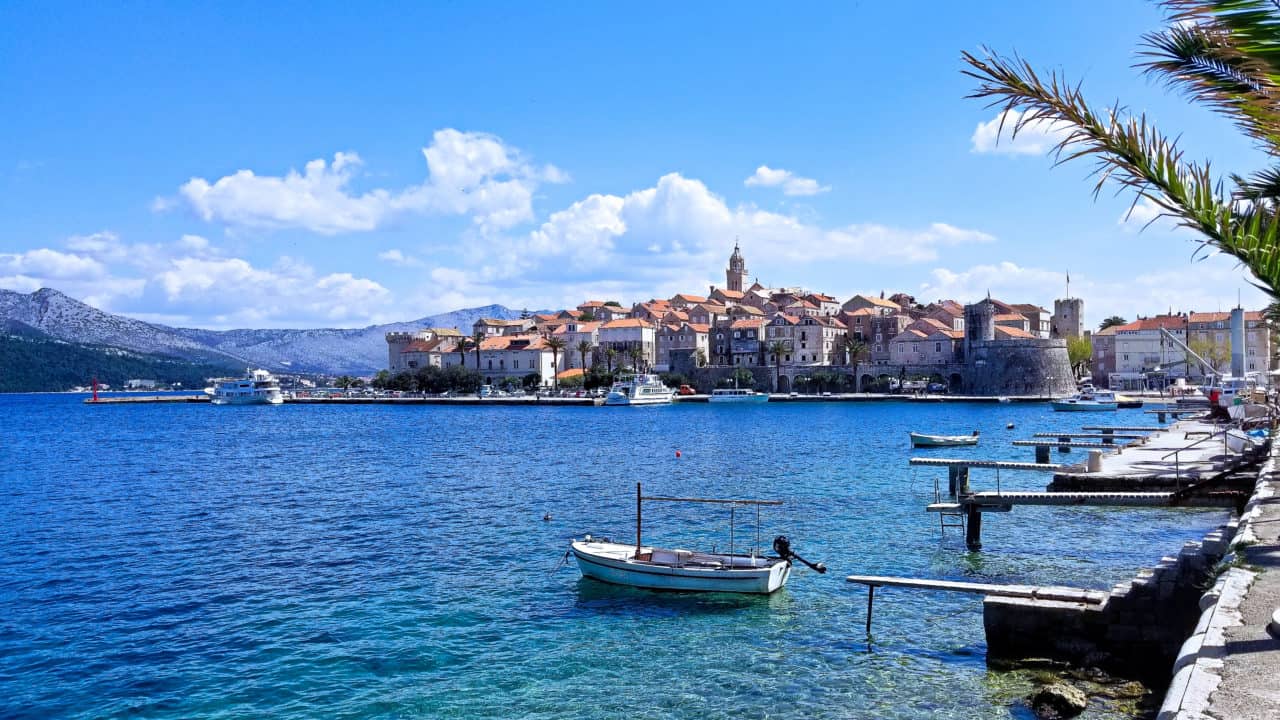
One day, when we were driving around the peninsula, we visited a town the internet had referred to as the “Paris of the Adriatic”. That was quite a fib and disappointing. On the same day we visited the town of Ston which sits on the land connecting the peninsula to the mainland. According to the internet the only thing of any interest here were the city walls. This didn’t sound extremely interesting and Ston was a out of the way, so we almost decided to skip it. We were very pleased that we didn’t. We thought it quite interesting how the internet could get it wrong twice in one day. Ston is a fascinating place to visit.
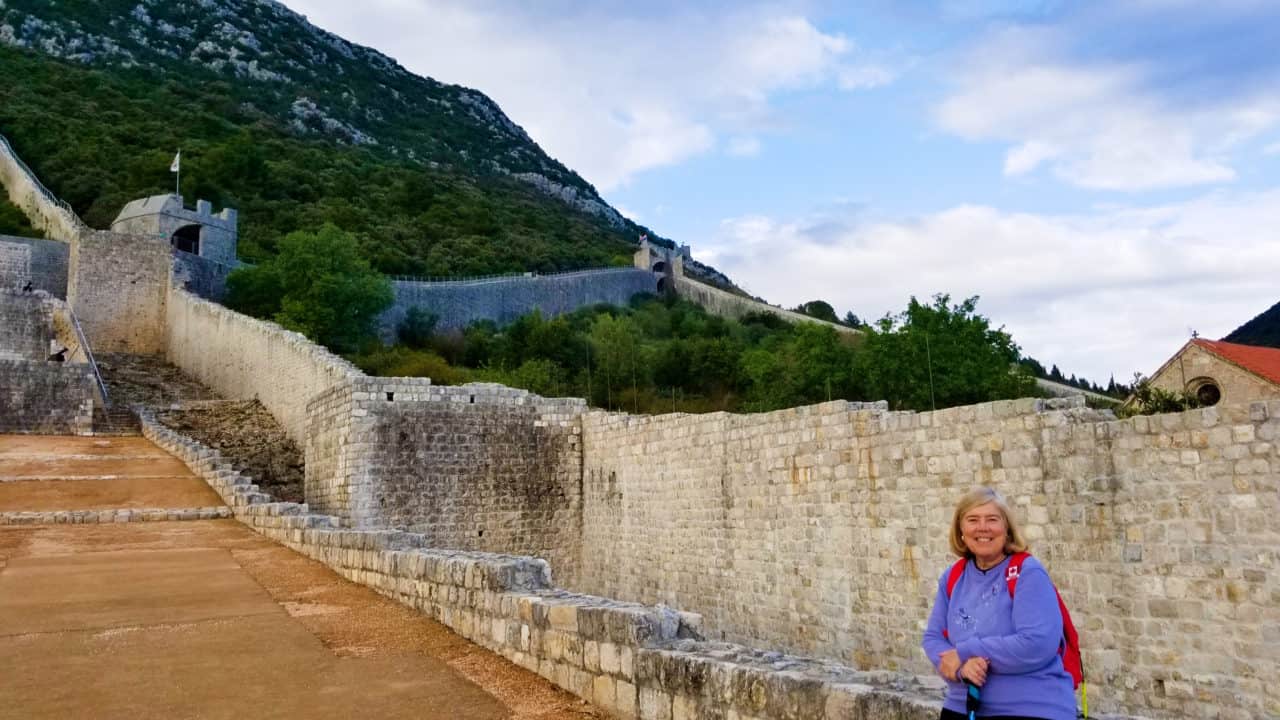
The two main things important to Ston are its defensive walls and it salt pans and they are tightly related. In 1333 the Republic of Dubrovnik purchased Ston and set about building a system of defences that would protect the lucrative salt pans that provided the town with its wealth. In total seven kilometres of wall were constructed, included three fortresses, 41 towers, 7 bastions and a system of moats. The walls connected or protected three towns. In the 19th century the city walls of Little Ston were demolished to suppress malaria, although I don’t really understand how that would help. When the Austrian Emperor Franz Joseph was visiting stones were required for new construction and much of the stone fortification complex was destroyed. The restoration of the stone monuments and the reconstruction of the fortifications and the tower resumed only after 1945, however they were again damaged in the Homeland War (1991-1992), followed by a devastating earthquake in 1996. The walls are five km (3 miles), making them the longest defensive structure in Europe. Visitors can walk up and along the restored walls. In some sections the walls are extremely steep. Mike walked up and along more of the wall than I did. I enjoyed a cappuccino below, watching him in the distance. In our photo gallery here is a picture of the walls with a tiny blue spot in the middle. That is Mike.
The salt pans of Ston are thought to be among the oldest in Europe, in more or less constant use for 4000 years. That is just unbelievable to me to think about. The basic method of production hasn’t radically changed since the Middle Ages and continues today.
Talking about “history” in Europe is so different from history at home. Here is the history of the Ston Saltpan. The Ston Saltpan experienced and survived the Greek, Illyrian and Roman rules, and it belonged to the medieval principality of Zachlumia. It was also under the Venetian rule and for centuries it belonged to the Dubrovnik Republic. It was occupied by Austria, then France, then Austria again. It belonged to Yugoslavia under Tito, and it finally settled in the independent and sovereign Republic of Croatia AND, those same salt pans are still producing salt today!
It feels like Croatia is waking up from its winter. Everything is green now. Anything to do with tourists is being spruced up from paint and varnish to gardening and construction. There are more people around when we go walking or biking. It is nice to see (but I don’t want too many people 🙂 ). Tomorrow we leave this area and continue south to Dubrovnik which I expect to be even busier.

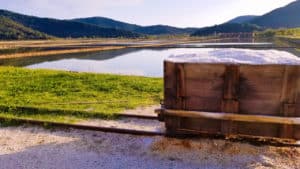
Leave a Reply